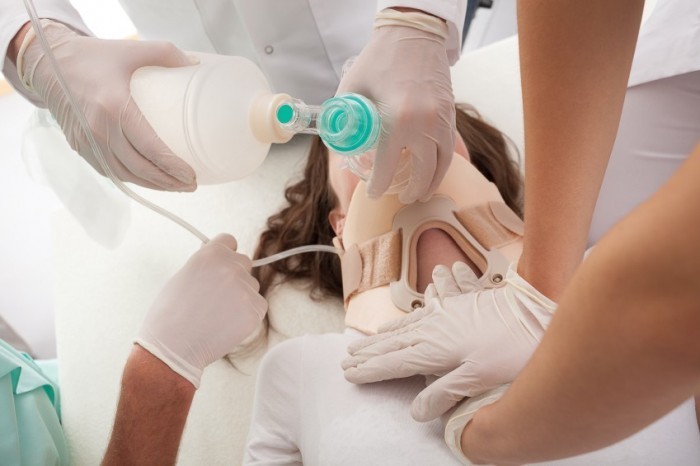SAN ANTONIO, TX – Citing the shocking incidence of “never event” wrong-sided CPR (commonly known as WroSC), the Joint Commission issued new guidelines today mandating a 42-step timeout prior to the initiation of CPR for in-hospital cardiac arrest.

The timeout can only be initiated by the patient’s bedside RN, period. When asked if they thought it would be a problem since many times the bedside RN may be unavailable, the Joint Commission spokesperson Beatrice Belarus said, “Absolutely not. Our policies are 100% guaranteed to keep patients safe.”
Once initiated by the bedside RN, the timeout requires the presence of the charge nurse, the nurse educator, the nurse manager, the chief nursing officer, the patient’s next of kin, the next of kin’s next of kin, and either a licensed physician, a random person from the cafeteria, or a ferret to be a witness.
Chest compressions cannot begin, nor can any defibrillation device be attached to the patient, until all 42 steps have been completed and each step has been independently verified by each RN in the room as well as an RN from another floor with no knowledge of the current situation. If the patient has had orthopedic surgery in the past year, a Striker rep is also required to verify the completion of the timeout.
When asked if this new policy was evidence-based, spokesperson Belarus laughed and said, “At the Joint Commission we’ve moved far beyond evidence. We have a panel of expert lay people, all of whom have absolutely no training in clinical medicine, or even medicine of any kind for that matter, who give the full backing of their opinions to our policies.”
Belarus cited the “tragic example” of a recent case at world-famous Mons Hopkins Medical Center in which a code was called for a patient who was found in bed, unresponsive to soft voice call. The code team arrived and eager intern Abe Moskowitz began “chest compressions” only to learn later that he had been compressing the patient’s back, i.e. “back compressions.”
The patient, who had been asleep, said, “I didn’t realize how dangerous it could be to be a belly sleeper. But honestly, once I got over the shock of 40 people in the room it was one of the best massages I’ve ever had.”
When asked about what happened Moskowitz responded, “Come on, cut me a break, I haven’t had anatomy lab for 4 years. Besides, who has time for backs and fronts? I’m a doctor, man! I was in the zone, the Code Blue zone!”
Nurse Mary Labrenahan, who had been on break during the code, returned later and had this to say, “That idiot Moskowitz can’t tell his own front from his back. I’m not surprised at all to hear he committed a WroSC.”
Joint Commission spokesperson Belarus explained that it was “never events” like this that led to the recent new regulation. “If our timeout procedure had been in place, that nice patient never would of had a surprise wake up with back compressions.”
Mons Hopkins initially resisted the new timeout procedure, citing the importance of rapid initiation of chest compressions in patient survival. But the Joint Commission threatened to withdraw certification and Hopkins quickly backed off and embraced the new regulation.
Floor to ceiling posters with the 42 steps have been posted in every room in Mons Hopkins Medical Center and physicians are now required to wear the steps on a full-body sign around their necks.







